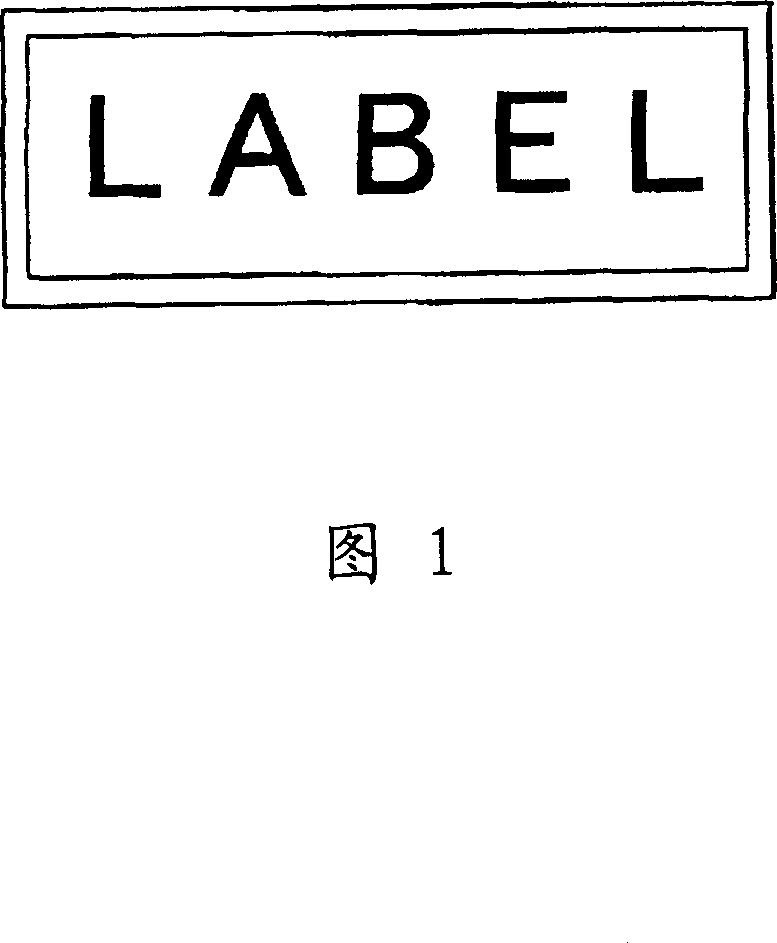Label for laser welding and composite molding
A technology of laser welding and composite molding, used in laser welding equipment, welding equipment, manufacturing tools, etc., can solve the problem of lack of records, and achieve the effect of strong bonding or attachment and excellent recyclability
- Summary
- Abstract
- Description
- Claims
- Application Information
AI Technical Summary
Problems solved by technology
Method used
Image
Examples
Embodiment 1~12 and comparative example 1
[0094] (1) Production of labels
[0095] Using the resins and colorants shown in Table 1, sheets A to M having the thicknesses shown in Table 1 were prepared. Table 1 shows the results of evaluating the total light transmittance, haze value, and laser transmittance of the obtained sheet. The obtained sheet was cut into a size of 20 mm×60 mm to prepare a label.
[0096] (2) Laser welding
[0097] Using black colored high-impact polystyrene (HIPS) (carbon black (CB) content of 0.5% by weight) and black colored acrylonitrile-styrene-butadiene (ABS) resin (carbon black (CB) content of 0.5% by weight) to form a sample of a molded product (100 mm in length x 100 mm in width x 2 mm in thickness). Place the label produced in the above step (1) on the sample of the molded product, place a transparent glass plate as a weight on the label, and use a 120W laser welding machine (semiconductor laser, wavelength 940nm) manufactured by Fine Device Co. , and weld both (welding condition I:...
Embodiment 13
[0110] (1) Fabrication of labels with absorbent layers
[0111] By the multilayer extrusion method, on the resin layer having the same composition as sheet C in Table 1, a masterbatch (manufactured by Dainippon Seika Kogyo Co., Ltd.) containing 100 parts by weight of the same HIPS as above and carbon black (CB) was formed. PS-M SSC 98H 822D black) 2 parts by weight of an absorbing layer with a thickness of 10 μm to prepare a label with such a two-layer structure. In addition, the thickness of the said resin layer was set to 339 micrometers similarly to sheet C. In this example, the sheet constituting the resin layer is referred to as "sheet C" for convenience. In addition, the total light transmittance, haze value, and laser light transmittance of the resin layer can refer to the transmittance in photo C, respectively.
[0112] (2) Laser welding
[0113] In addition, the label and the bonded body were welded in the same manner as in Example 3, except that HIPS was used inst...
Embodiment 14
[0115] (1) Fabrication of labels with absorbent layers formed
[0116] A HIPS film (thickness: 20 μm, absorbing layer) containing carbon black (CB) was thermally laminated on sheet C (resin layer) in Table 1 to produce a label with a two-layer structure.
[0117] (2) Laser welding
[0118] In addition, the label and the bonded body were welded in the same manner as in Example 3, except that HIPS was used instead of the carbon black (CB)-containing HIPS of Example 3 as the bonded body. Table 3 shows the welding evaluation under each condition and the peeling test results of the welded sheet.
PUM
| Property | Measurement | Unit |
|---|---|---|
| thickness | aaaaa | aaaaa |
| thickness | aaaaa | aaaaa |
| thickness | aaaaa | aaaaa |
Abstract
Description
Claims
Application Information
 Login to View More
Login to View More - R&D
- Intellectual Property
- Life Sciences
- Materials
- Tech Scout
- Unparalleled Data Quality
- Higher Quality Content
- 60% Fewer Hallucinations
Browse by: Latest US Patents, China's latest patents, Technical Efficacy Thesaurus, Application Domain, Technology Topic, Popular Technical Reports.
© 2025 PatSnap. All rights reserved.Legal|Privacy policy|Modern Slavery Act Transparency Statement|Sitemap|About US| Contact US: help@patsnap.com

